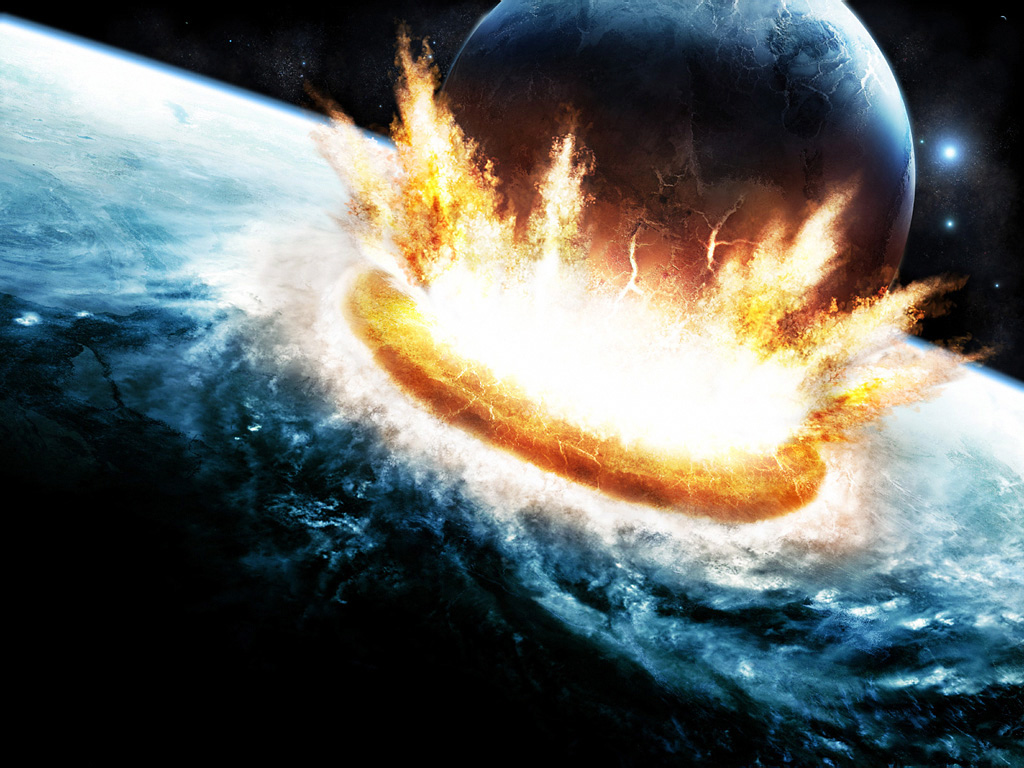Prepare for More Asteroids to Hit Earth, Scientists Say
Asteroids have been the fodder for some… interesting science fiction blockbusters, but with the strike in Chelyabinsk, Russia this year, scientists say it's time to get serious. Two papers published in Nature -- one of the most prestigious academic journals -- suggest that asteroid strikes might be a bit more common in the coming years.
Current searches for asteroids are only for those that are at least 1 kilometer wide, but those are rocks big enough to end our civilization. Smaller bits -- those that are capable of devastating countries or cities -- slip through the cracks.
Former astronaut Edward Lu is prepared to help defend Earth with B612 -- a project with the goal of detecting much smaller threats from outer space. According to the project, there are a million "near-Earth asteroids large enough to substantially damage or destroy a major city." Equivalent to a massive minefield of nuclear warheads, this is not a threat we can simply ignore.
Impacts the size of the one that hit Chelyabinsk should be expected every one or two decades. To be sure, a good chunk of the Earth is uninhabited, and it's unlikely that any of these impacts will hit a major city, but with the stakes as high as they are, that's no longer a gamble we can afford to make.
Get Tom's Hardware's best news and in-depth reviews, straight to your inbox.
-
troger5troger5 scare scare scare. we can feed everyond. people die by the thousands every day from sickness. but we got the money to install skynetReply -
clonazepam There's a team on the moon shooting these things at us. It's only a matter of time before they dial in their instruments, and get the accuracy down! The best weapon is the one that doesn't appear to be a weapon at all.Reply -
d_kuhn "Prepare for more asteroids to hit earth" - What the heck does that mean? Are you implying that the statistical probability of an asteroid striking earth has magically increased? Maybe it's a quantum effect... now that we're observing asteroids we've changed the probability distribution <:-) (me wearing my tinfoil hat). The other possible meaning would be that "more asteroids will hit the earth" which is akin to saying "prepare for more rain to strike the earth", or "prepare for more blame to be attributed to Bush"... self evident.Reply -
thechief73 Translation - Us rich people are tired of you poor people breeding, clogging up the works, and killing the planet with all that junk we convinced you to buy so we could get rich. So we just taxed you like crazy and spent the money on Deep Underground Military Bases and the technology for us to throw theses space rocks at you, claiming we spent it all on "national security". Oh and the cool thing about it is we can blame "Nature". HAARP, Chem Trails, FEMA Bases, Follow the money. Look it up and wake up.Reply
With ISON on its way and the all other comets that were just discovered this year and passed by the inner solar system with only months of warning, these scientific fantasies of stopping or adverting an incoming object seems nil. WE are just going to sit and watch it happen like ALL the other man made and natural disasters of the past century.
@eklipz330 - Though I agree we need massive change to happen yesterday, its not really humanity, just the ones that are controlling and manipulating the masses, and quite frankly they are doing a great job at it unfortunately. -
Memnarchon Actually there is a possibility for a large asteroid to hit Earth at 2880.Reply
Could life on Earth end on March 16, 2880? Scientists predict giant asteroid will collide with our planet at 38,000 miles per hour
Meet the Asteroid That Might Hit Earth in 2880
It is due to swing so close to Earth it could slam into the Atlantic Ocean at 38,000 miles per hour.
It is estimated that if 1950 DA were to collide with the planet, it would do so with an force of around 44,800 megatonnes of TNT. -
Blessedman More evidence for the cult leaders of this world to recruit with. "God has chosen to attack the non believers with space rocks" I am sure statistically our chances are always increasing to be struck again.Reply -
one-shot I hope you weren't an English major at the university. Your writing is as disastrous as a 1km meteorite impacting this planet. Asteroids don't hit the Earth, and syntax is absent from your writing. May Tom's Hardware please send you back to a proper writing institution.Reply
If you're going to sensationalize, at least do some research into these matters and proper writing. -
deftonian @ Memnarchon... by 2880, I'm pretty sure we'll have laser beams or some crazy tech that will just make the asteroid disappear. If not, the world will have already been consumed and destroyed by the natives... us.Reply
